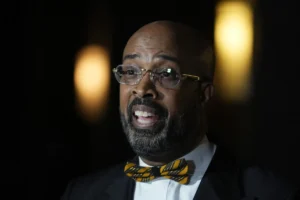Misty Copeland Is Introducing Black and Latino Children to Ballet
2 min read
The renowned dancer’s BE BOLD program will provide free dance classes to hundreds of students
By: Nina Raemont
When Misty Copeland was 13 years old, she took her first ballet class on a basketball court at a Boys and Girls Club in San Pedro, California. Four years later, she was performing on the Lincoln Center’s stage.
That free ballet class sparked the ballerina’s astounding career. In 2015, she became the first Black woman to become a principal dancer, the highest position in a ballet company, at American Ballet Theatre.
Now, Copeland is returning the favor by starting her own free after-school ballet program for kids ages 8 to 10. Called BE BOLD, it will debut this month at two Boys and Girls Clubs in New York City.
Historically, the ballet world has been inaccessible and predominantly white. BE BOLD aims to change that.
“I really want to hold onto the beautiful aspects of ballet—the discipline, the creativeness—and get rid of those old, stereotypical things that don’t make for a good experience, especially for Black and Brown children,” Copeland tells the New York Times’ Javier C. Hernández.
The program will train students in ballet, music and health. BE BOLD’s teaching artists will be trained by the National Dance Institute, per the Times. Copeland aims to admit several hundred students this year, eventually expanding in future years to admit thousands.
In recent years, amid the Black Lives Matter movement and a nationwide reckoning over racial justice, Copeland witnessed the art world reassessing equity and representation, she tells the Harvard Business Review’s Alison Beard.
“I’ve been having these conversations for 20 years, and only in the past two have I seen people really listen. Before, it was checking off boxes, like ‘Let’s put Misty’s face on this diversity initiative,’” she says. “Now the discussions are more honest, and they’re coming from a real place of wanting to create change.”
BE BOLD aims to be a part of that change, reorienting the world of elite ballet for a future generation of dancers from all backgrounds.
“It’s so important for me to give back to the community, as well as to show people that ballet should be and can be inclusive,” she tells the Times. “It’s giving opportunities to people that don’t feel that they are included in this elite art form, and offering a new approach to what ballet can look like.”








